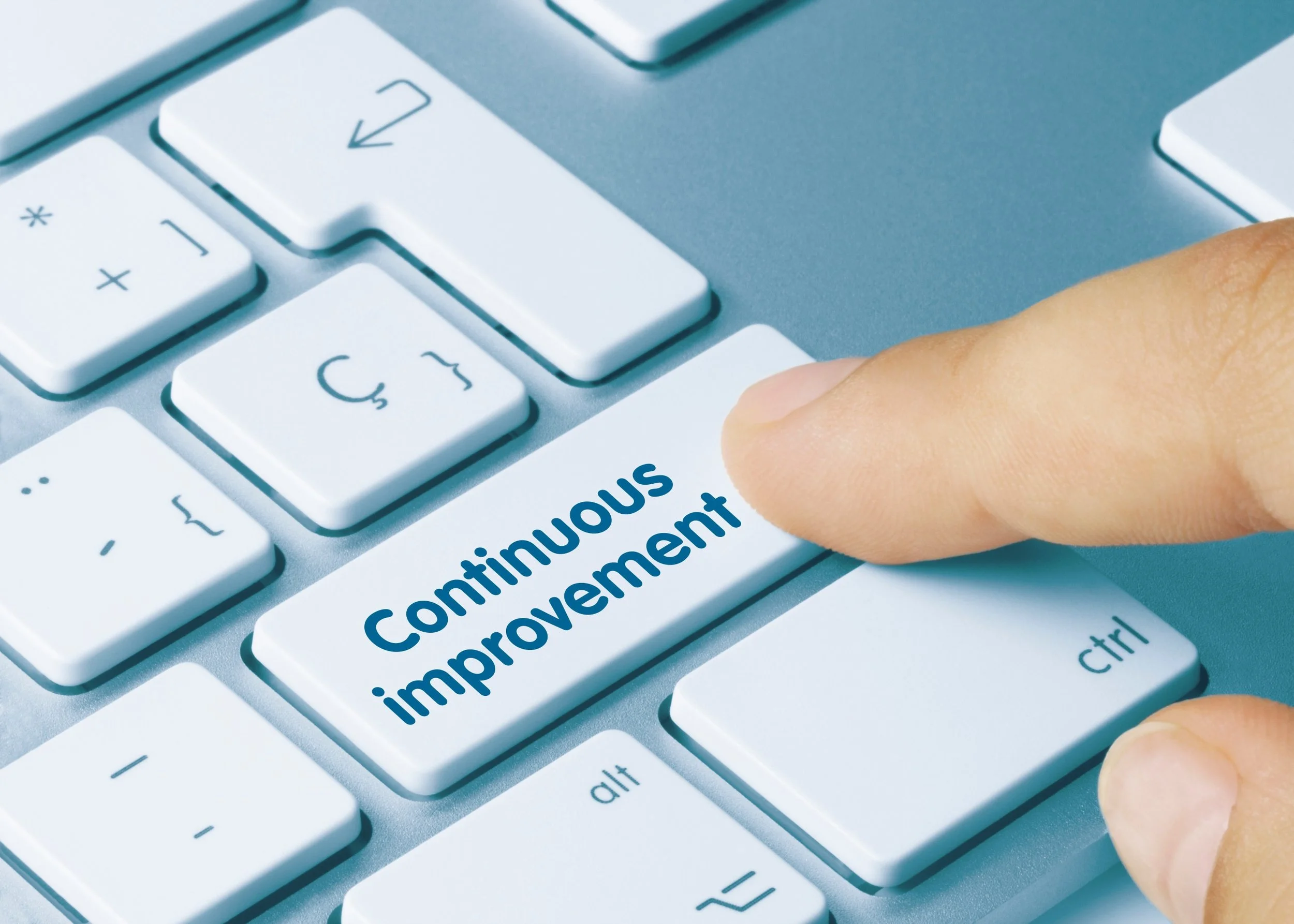How Continuous Improvement Strengthens Healthcare Organizations: A Guide for Executives
The Key to Long-Term Financial Viability and Operational Excellence
In our previous post, we talked about treating healthcare operations like a trauma patient - Prioritize, Stabilize, Optimize - where Prioritize is the equivalent of Triage, and Continuous Improvement is the equivalent of Optimize. This is the phase in which we can finally treat our healthcare system like a generally healthy patient who needs daily medication to address a condition and follow up visits for monitoring and adjusting.
It’s no secret that healthcare organizations today face mounting financial pressures, rising patient expectations, and an ever-evolving regulatory landscape. Leaders in this environment know standing still isn’t an option. Organizations must continuously improve to remain competitive, financially strong, and capable of delivering the best possible care.
Continuous improvement can sometimes feel like a daunting undertaking, especially given the many high-priority challenges that demand the attention of healthcare leaders, however it is a practical, results-driven strategy that helps leaders reduce inefficiencies, optimize revenue streams, and enhance patient experiences. When implemented effectively, it leads to stronger financials, better patient outcomes, and long-term viability.
Let’s explore how continuous improvement benefits healthcare organizations and provides a structured approach for executives looking to embed it into their culture.
Why Continuous Improvement Matters
The Domino Effect of Small Changes
Small, consistent improvements create a ripple effect across an organization. Streamlining scheduling processes, reducing patient wait times, and improving billing accuracy all contribute to significant financial and operational gains over time, and staff morale is better.
Fixing the Leaks in the System
Revenue losses from inefficient processes, denied claims, and outdated workflows can drain an organization’s financial resources. Addressing these issues through continuous improvement and regular monitoring ensures that revenue stays within the organization to fund better patient care and innovation.
Real Financial Gains Through Optimization
Healthcare leaders who embrace continuous improvement often see measurable financial benefits. For example, reducing claim denials through better revenue cycle management can result in millions of dollars in recovered revenue. Improving patient throughput can increase capacity without additional costs. (***see footnote at end of article***)
Staying Competitive in a Changing Market
Organizations that continually refine their processes outperform their peers. Efficient operations lead to lower costs, higher patient satisfaction, and stronger financial stability - all of which are critical for long-term success.
Enhancing Patient Care Leads to Better Financials
When operations run smoothly, patients receive better, more timely care. Happy patients lead to higher retention, better reimbursement rates, and a stronger reputation, all of which contribute to financial sustainability.
How to Build a Culture of Continuous Improvement
Transforming a healthcare organization into one that thrives on continuous improvement requires commitment, leadership, and a structured approach. I can hear you asking as you’re reading: Continuous improvement is easy to talk about, but how do we do it? Here’s how executives can make it happen:
1. Define Clear Goals and Objectives
Continuous improvement starts with a clear vision. Leaders must identify key priorities, set measurable objectives, and establish a core team to manage and drive improvement efforts.
Keep it simple: Supports clarity and focus, making it easier for teams to understand and adopt, and helps us avoid the communication silos we are all familiar with. Simplified process will reduce complexity, avoid overwhelming the teams, and foster consistent, measurable progress over time.
Align with organizational strategy: Ensure improvement initiatives support broader financial and patient care goals.
Use data to guide focus areas: Identify pain points such as high readmission rates, inefficient workflows, or revenue cycle bottlenecks.
Establish accountability: Leverage your governance structure to engage a top down support structure and assign leaders responsible for tracking progress and ensuring continuous improvement becomes an ongoing effort rather than a one-time project. If you don’t have a good governance structure in place, create one or make improvements to the one currently in place. I will write about how to do that in an upcoming article.
2. Empower and Engage Staff
Frontline employees are the backbone of any improvement initiative. Engaging them in the process leads to better insights, more buy-in, sustained results and increased morale.
Encourage problem-solving at all levels: Staff members who interact with patients and systems daily often have the best ideas for improvement.
Provide training and resources: It is our job as leaders to equip our teams with tools to identify inefficiencies, propose solutions, and be successful in completing their responsibilities.
Create an open feedback culture: Establish mechanisms for staff to voice concerns and share ideas without fear of pushback. Staff should feel comfortable communicating opportunities for improvement.
3. Adopt a Patient-Centered Approach
At the core of continuous improvement is the goal of enhancing patient care. Every initiative should prioritize the patient experience and health outcomes.
Reduce patient wait times: Streamlining processes in scheduling, registration, and discharge improves both satisfaction and efficiency.
Improve care coordination: Ensure seamless transitions between departments and providers to enhance outcomes and reduce errors.
Enhance communication: Clearer patient instructions and provider communication can reduce readmissions and unnecessary follow-ups.
4. Leverage Data and Technology
Data-driven decision-making is key to identifying opportunities for improvement and measuring impact.
Use predictive analytics: AI-driven tools can forecast patient demand, optimize staffing, and prevent revenue loss.
Improve revenue cycle management: Automate billing processes to reduce denials and ensure accurate reimbursement.
Track objectives and key results (OKRs) or key performance indicators (KPIs): Regularly measure operational and financial performance to identify areas needing attention. Remember to baseline.
5. Foster Collaboration Across Departments
Silos can hinder progress. Encouraging collaboration between clinical, financial, and operational teams ensures a more comprehensive approach to improvement.
Cross-functional teams: Bring together representatives from different departments to tackle common issues.
Regular communication: Host recurring meetings to discuss challenges, share successes, and align improvement efforts.
Shared goals and metrics: Ensure all departments are working toward common performance benchmarks.
6. Celebrate Wins and Learn from Failures
Acknowledging progress - both big and small - keeps teams motivated and reinforces a culture of improvement.
Recognize employee contributions: Publicly acknowledge staff members who drive positive change.
Share success stories: Highlight improvements in patient satisfaction, efficiency, and financial performance.
Turn failures into learning opportunities: Analyze setbacks to refine strategies and improve future initiatives.
7. Make Continuous Improvement a Leadership Priority
A culture of improvement starts at the top. Leadership must actively support, participate in, and communicate the importance of ongoing enhancement efforts. Leverage your existing governance structure and make this a regular part of your discussions
Lead by example: Executives and managers should embrace improvement initiatives and encourage teams to do the same.
Allocate necessary resources: Ensure teams have the time, budget, and tools to drive meaningful change.
Embed improvement into daily operations: Continuous improvement shouldn’t be an occasional project - it should be an integral part of organizational strategy.
8. Institutionalize Improvement as a Core Value
For long-term success, continuous improvement must become ingrained in the organization's DNA.
Develop policies that support ongoing improvement: Make it a formal expectation rather than an optional effort.
Align incentives with progress: Reward departments and individuals who contribute to measurable improvements.
Sustain momentum: Regularly revisit and refine initiatives to ensure they evolve with changing needs and market conditions.
The Long-Term Impact of Continuous Improvement
When healthcare organizations commit to continuous improvement, they create a culture of innovation, efficiency, and financial strength. The benefits extend beyond cost savings. Improved workflows enhance patient experiences, engaged employees contribute to higher-quality care, and optimized financial performance ensures long-term viability.
For executives looking to future-proof their organizations, the message is clear: continuous improvement isn’t just an option; it’s a necessity. By embracing small, consistent changes, healthcare organizations can build a foundation for lasting success—ensuring they remain resilient, financially stable, and focused on delivering exceptional patient care.
Is your organization ready to take the next step? Start today by defining key objectives, engaging your team, and making continuous improvement a core pillar of your strategy.
***The statement that “reducing claim denials through better revenue cycle management can result in millions of dollars in recovered revenue” is supported by industry data. For instance, a November 2024, article in Medical Economics highlights that hospitals face an average annual loss of $5 million due to claim denials, which constitutes about 5% of their net patient revenue. By implementing effective revenue cycle management strategies, healthcare providers can significantly reduce these denials to recover substantial revenue.***






